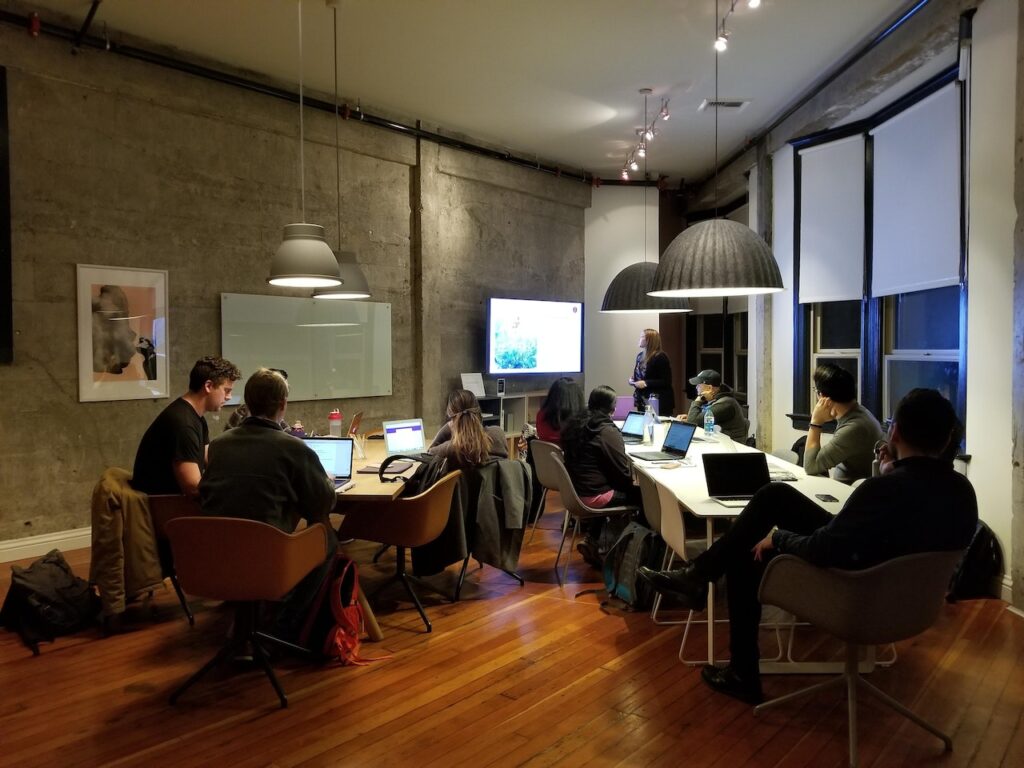Home office lighting can be one of the most important decisions you make when setting up your workspace. Not only does decent lighting help you stay productive, but it can also improve your mood and concentration. When setting up a home office, the lighting should be bright enough to keep you productive while also providing a comfortable atmosphere. Good home office lighting should be bright enough to make sure you can see your work clearly, but not so bright that it causes eye strain or headaches.
How bright should your home office lighting be? Generally speaking, the ideal brightness level for a home office should be between 500 and 650 lux, equivalent to about 80-100 lumens per square foot. This provides enough brightness for comfortable work, while not being too bright to cause discomfort.

The Purpose of Home Office Lighting
The purpose of home office lighting is to provide a comfortable and functional space for working. To achieve this balance, consider using natural light sources such as windows, skylights, or lamps with adjustable brightness settings. Strategically placed mirrors can also help to reflect and distribute light throughout the space. Additionally, adjust the colour temperature of your lighting to better suit your needs, choosing warmer tones for relaxation or cooler tones for focus. By making these small changes, you can create a home office that is both well lit and comfortable.
There are a few factors to consider when choosing how bright home office lighting should be.
1. The space should be used regularly, so it’s important that the light is bright but not too harsh.
2. It’s important to consider the task at hand. If you’re working on paperwork or writing, low-level light will work fine, but if you’re trying to focus on a project or work on a specific task, brighter light may be more effective.
3. People vary in their sensitivity to light, so it’s important to find a light that’s comfortable for you and your coworkers.
Ultimately, it’s up to each individual to decide what brightness level works best for them and their workspace. Here’s the complete guide to designing your home office.
Types of Lighting
There are a few different types of lighting that can be used in a home office.
The most common type of lighting is natural light. This can come from windows, skylights, or indirect lighting from a fluorescent or incandescent bulb.
Another type of lighting is artificial light. This includes things like overhead fluorescents, track lighting, task lamps, and desk lamps.
There are also special types of lighting for specific tasks, like reading light for people who work at night or study light for people who want to do serious work after dark.
A good rule of thumb is to choose the light that’s comfortable for you. If you have trouble working in natural light, artificial light might be better for you. And if you need a lot of light to see clearly, try using a desk lamp instead of an overhead fluorescent fixture.

Brightness Levels
When setting up your home office, it is important to consider the brightness of the lighting. Too much light can be harmful to your eyes, while too little light can make it difficult to work.
To find the right brightness level for your home office, you first need to determine how bright you need the lights to be in order to perform your tasks. There are a few factors that will affect this decision, including your task and vision-related needs.
Once you have determined how bright you need the lights to be, you can start looking for lighting products that meet your requirements. You should aim for fixtures that emit around 600 lumens or more.
If you feel like you are spending too much time trying to adjust the light levels in your home office, consider investing in a lighting control system. These systems allow you to set specific brightness levels for each area of the room, so you no longer have to worry about adjusting the light fixture every time you want to change the mood.
How to Choose the Right Lighting for Your Home Office
When you’re creating an office in your home, there are a few things to keep in mind when it comes to selecting the right lighting.
First and foremost, you need to decide what type of work you’ll be doing in your office. Will you be primarily using the space for writing, researching, or working on presentations? Once you have a better idea of what you’ll be using your office for, it will be easier to decide on the appropriate level of light.
For writing and research, a natural light source is ideal. This means that you can leave the door open and access natural light from outside if necessary. A desk lamp or floor lamp with a standard light bulb will provide the perfect amount of light for this type of use. With this you will create a productive home office environment.
If you plan on conducting more formal presentations or working on larger projects, a more serious level of light is necessary. A proper work space should have a bright overhead light (preferably with a fluorescent tube), as well as lamps positioned around the perimeter of the desk or cabinet to provide supplemental light. You may also want to consider investing in a screen magnifier if you need to work on documents up close.
When you’re working from home, the last thing you want is a blinding light coming in through your windows and ruining your concentration. That’s why it’s important to choose office lighting that’s bright but not too bright. You don’t want to be squinting at your computer screen all day long! Try out some of these tips to find the right office lighting for you:
- Choose office lighting that has a soft or medium lightbulb. This will give you just the right amount of brightness without being too harsh on your eyes.
- Place lamps closer to where you sit so they won’t cast a shadow on your desk. This will make it easier for you to see what you’re doing.
- Consider purchasing an LED lightbulb instead of an incandescent one. LED lights are much more energy-efficient and can last up to 20 times longer than traditional bulbs before needing replacement.
Benefits of Appropriate Home Office Lighting
Appropriate home office lighting include the following benefits:
Improved Productivity: Appropriate lighting can help improve productivity in the home office by providing the necessary illumination to complete tasks without having to struggle with dimness. Appropriate lighting also encourages people to stay alert and focused on their work.
Improved Safety: Accidents can be easily avoided when there is sufficient lighting in home offices. When working on difficult tasks or in hazardous areas, proper lighting can be especially important for safety.
Improved Health: Appropriate lighting can help reduce stress and fatigue levels which can lead to improved overall health.
Improved Mood: Proper lighting can also help improve one’s mood. This can be especially helpful when working in a home office due to the potential for loneliness.
The brightness of home office lighting should be tailored to the individual’s needs and preferences. Generally, the lighting should be bright enough to allow the user to work comfortably, without being too bright so as to cause eyestrain. A good rule of thumb is to use task lighting and adjust the brightness as needed to suit the task at hand. Additionally, natural daylight should be maximized to reduce the need for artificial lighting.
Considerations for Choosing the Right Home Office Lighting
Task Lighting: Task lighting should be the primary source of illumination in a home office. It should be focused on the task or area you are working on, allowing you to see clearly without straining your eyes. A good rule of thumb is to have a task light at least three times brighter than the ambient lighting.
Ambient Lighting: Ambient lighting should be used as a secondary light source in a home office and should be used to fill in the shadows and create a more pleasant atmosphere. This type of lighting should be uniform and diffused throughout the room.
Directional Lighting: Directional lighting should be used to highlight specific areas or objects in the home office. This type of lighting should be adjustable so that you can direct the light where it is needed.
Natural Light: Natural light is always the best source of lighting for any home office. Whenever possible, it is best to take advantage of natural light by having windows or skylights in the room.
Color Temperature: Color temperature is an important factor to consider when choosing the right home office lighting. For task lighting, it is best to choose a cooler color temperature, such as daylight bulbs, which have a higher color temperature. For ambient lighting, it is best to choose a warmer color temperature, such as soft white bulbs, which have a lower color temperature.
In conclusion, the right home office lighting should be chosen based on the task you are doing, the amount of natural light available, and the desired color temperature. The brightness of the lighting should be adjusted accordingly, but should always be at least three times brighter than the ambient lighting.
Effects of Poor Home Office Lighting
Poor home office lighting can have a significant impact on one’s productivity, health, and safety. It can lead to eyestrain, headaches, fatigue, and disrupted sleep cycles. It can also make it difficult to focus and concentrate for long periods of time and may increase one’s risk of developing a computer-related injury.
In order to prevent these negative effects, it is important to ensure that your home office has adequate lighting. The brightness level of your home office lighting should be tailored to your individual needs and preferences. Additionally, it is important to ensure that the lighting is properly positioned so that it is not creating glare on your computer screen or other surfaces.
Finally, the color temperature of your home office lighting should also be considered when selecting the right light fixtures. Color temperature is measured in Kelvin and is used to describe how warm or cool the lighting appears. For home office lighting, it is recommended to use warm white light between 3000K-4000K. This type of lighting will provide a comfortable cozy and inviting work environment.
In conclusion, it is important to ensure that your home office has adequate lighting in order to prevent eyestrain, fatigue, and other negative effects. The ideal brightness level for a home office should be between 500-650 lux, and it is recommended to use warm white light between 3000K-4000K. Properly positioning the light fixtures can also help reduce the risk of glare.
Making the Most of Natural Lighting in Your Home Office
Natural lighting is a key component of any home office, as it can boost productivity and enhance the mood of the workspace. However, it is important to ensure that the lighting is properly managed, as too much natural light can be just as uncomfortable as too little.
In order to make the most of the natural lighting in your home office, it is important to consider the following factors:
• Positioning: Place your desk and other furniture away from windows to avoid glare and direct sunlight, and consider adding blinds or shades to regulate the amount of light coming in.
• Brightness: The optimal brightness for a home office should be around 500-600 lux, which is equivalent to a mid-morning sky on a sunny day.
• Color Temperature: The optimal color temperature for home office lighting should be in the range of 4500-5000K, which is equivalent to daylight.
• Lighting Fixtures: Use lighting fixtures to supplement natural light when it is not enough, such as task lights and ambient light sources.
By taking the time to properly manage the natural lighting in your home office, you can create a workspace that is comfortable and conducive to productivity. This will help you make the most of your home office, no matter what time of day it is.
Lighting Tips for Optimal Home Office Performance
Natural Light: Whenever possible, position your home office near a window or other source of natural light. Natural light can help reduce stress and keep you energized during the day.
Artificial Lighting: When natural light isn’t available, use artificial lighting. Desk lamps and overhead lighting should provide adequate lighting for your home office. Aim for a brightness of about 400 to 500 lumens for the overall room.
Consider Light Color: The color of light can be an important factor in your home office. Use a soft white light bulb for your desk lamp and a cooler white light (around 5000K) for overhead lighting.
Reduce Glare: To reduce glare, use light fixtures with a frosted finish or buy a lampshade for your desk lamp. You can also use blinds or curtains on windows to reduce glare from natural light.
Don’t Forget the Ceiling: If your home office has a ceiling, make sure it’s well-lit. Installing recessed lighting or track lighting can help you keep the ceiling bright without being too harsh.
Task Lighting: If you have specific tasks that require a lot of concentration, additional task lighting can be helpful. Position the light source directly over the desk or task area to avoid casting shadows.
Dimmer Switches: Dimmer switches can be an important tool for controlling your home office lighting. They allow you to adjust the brightness level for different tasks, or for when you just want a bit of relaxation.
Utilize Natural Light: During the day, open your blinds or curtains and take full advantage of natural light. This can help you save on your energy bill while still providing enough light for work.
Conclusion
In conclusion, choosing the right home office lighting is crucial for both productivity and well-being. It is important to consider factors such as task lighting, ambient lighting, directional lighting, natural light, and color temperature when selecting lighting fixtures. Poor home office lighting can lead to a variety of negative effects, including eyestrain, headaches, and fatigue.
On the other hand, making the most of natural lighting and properly managing artificial lighting can boost productivity and enhance the mood of the workspace. By following these lighting tips and tailoring the lighting to individual needs and preferences, individuals can create a comfortable and productive home office environment.















